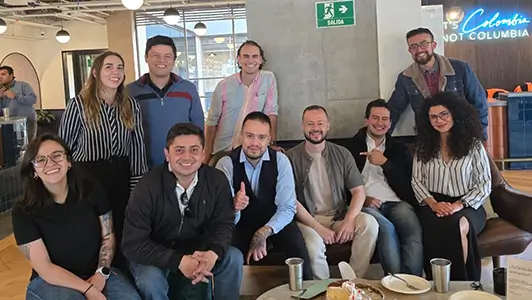For years, my three boys have been asking me to play video games with them. They prefer to play Fortnite with the limited gaming time they get, but it never struck my interest no matter how meme-worthy the dances are.
What has interested me is the metaverse, and more specifically Decentraland, a project creating a virtual world built on the blockchain. So I volunteered my kids to explore with me. What I found was…well…a mixed bag of reality.
Something new?
I first heard the term “metaverse” in blockchain circles during the NFT explosion in early 2021, reading about their bridge between virtual and physical worlds. Less than 6 months later, Facebook was rebranding as Meta, and Zuckerberg was talking about the experiential internet. Something was up.
Our industry is great at rebranding technologies to make them cool and fresh. Grid computing wasn’t cool until it got rebranded as cloud computing, and we know what happened next. NFTs were around long before Beeple’s famed $69 million sale in early 2021; they were simply called digital objects. Given the swift rise of the term “metaverse” and its vague references to virtual worlds, I wanted to find out if this was another reincarnation of existing tech or something new and worthy of the hype.
The word “metaverse” came from a 1992 science fiction novel titled “Snow Crash,” referring to a blend of the words “meta” and “universe”. Wikipedia defines the metaverse as a “network of 3D virtual worlds focused on social connection.” Mark Zuckerberg called the metaverse “the embodied internet.” The skeptic in me thinks our industry once again rebranded VR, AR, and mixed reality into a new term with cache and lots of VC funding.
Decentraland’s metaverse
My children had never heard of the metaverse, so I needed to get them excited, especially since their baseline gaming experiences are Fortnite and Roblox, well-designed environments with slick graphics and addictive game mechanics. So I tied the metaverse to the bourgeoning category of “play to earn” games like Axie Infinity, blockchain-based games where players earn and trade tokens for real currency. Making money playing games? That piqued their interest.
With the prospect of earning money, we jumped in. Despite our problems connecting — our kids game on phones, iPads, and consoles, and Decentraland only works through a web browser linked to a web3 wallet on a computer with decent hardware—we set up my avatar, went through a simple tutorial, and were on our way.

We landed in Genesis Plaza, point 0,0 in the virtual world. That’s when things got…well, boring. The graphics quality was limited and the environment was sometimes glitchy. More importantly, there wasn’t any immediate gratification like the FTUE in my kids’ typical games. It took all of 10 minutes to lose their attention and move on.
What about the larger question, of whether the metaverse is something new or recycled? The “newness” of the metaverse is supposed to encompass interactions using NFTs, virtual art, media, and social connections. So I checked out an NYE party at the newly unveiled One Times Square in Decentraland, complete with a virtual party, VIP lounges, Crypto Art galleries, and live music—the perfect venue to explore something different with my kids.
On NYE, I gathered them around my laptop and loaded up the virtual One Times Square. What we found was rather sparse, consisting of a handful of avatars standing around a concert square with a video feed of two people talking over the music. All we could do was make our avatar giggle in an awkward dance. The most entertaining part of the experience was the mockery in the chat console about how underwhelming the experience was.
My subsequent individual forays into Decentraland’s virtual bars, games, and casinos didn’t yield anything more interesting. The experience shows promise, but it had less interactivity and social interaction than I anticipated.
The verdict
Decentraland is an ambitious project, but it isn’t ready for prime time yet. Large bets are being made, as evidenced by the runup in price of their native token MANA (roughly 3200% since the start of 2021), and the extremely high demand for virtual land, but the early hype is driven more by FOMO among early adopters and corporate brands wanting to stay relevant. It seems as if the metaverse, or at least Decentraland, won’t be ready for critical mass until the web3 user experience challenges are solved, the virtual environment matures, and computing infrastructure improves by an order of magnitude to deliver on the hype.
At this point, the metaverse feels like another example of rebranding existing technologies. Decentraland can be described as Second Life with blockchain, with the core tenets of an experience that already exists in VR and AR.
Does this mean the metaverse will fade after the hype? No, it will have staying power. The potential of a mass-consumed, simulated universe without the constraints of physics and reality will no doubt be realized. The bigger question is whether this is a good or bad thing.





















